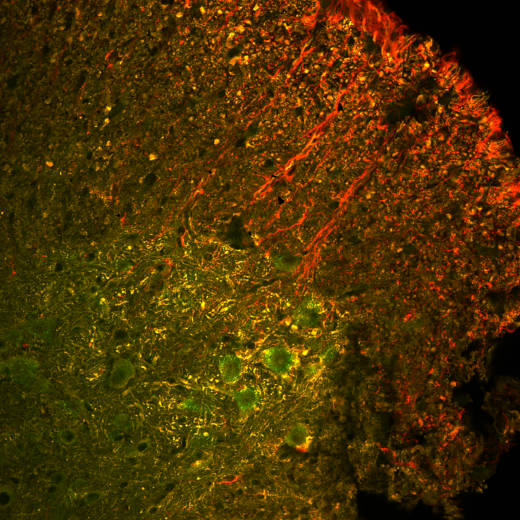Researchers have taken the first step toward a possible cure for Lou Gehrig's disease based on gene editing. The study, though limited in scope, provides a possible way forward to address some genetically driven cases of the disease.
An estimated 20,000 Americans live with the disease, which is also called amyotrophic lateral sclerosis, or ALS. The condition causes muscles to waste away and is fatal. Eventually sufferers lose use of muscles essential for breathing. Two drugs have been approved by U.S. health officials, but they are minimally effective, increasing survival by only a few months.
The researchers, at UC Berkeley, the University of Illinois and the University of Pittsburgh, are working on a new approach: altering a mutated gene that contributes to some cases of the disease. In mice, the technique increased average life span by about 25 percent and delayed onset of the disease by nearly 40 percent. The study is published the Dec. 20 issue of Science Advances.
"If this were to translate to humans it would be clinically very meaningful for patients," says co-author David Schaffer, of UC Berkeley.
The mice used in the study were genetically engineered to express a mutated human gene, known as SOD1, that causes 1 in 5 inherited cases of ALS. To disable the mutation, the researchers engineered a virus carrying a pair of molecular scissors in the form of a Cas9 protein, designed to knock out the SOD1 gene. The scientists targeted the neurons in the spinal cord, which the SOD1 mutation cause to prematurely die.
